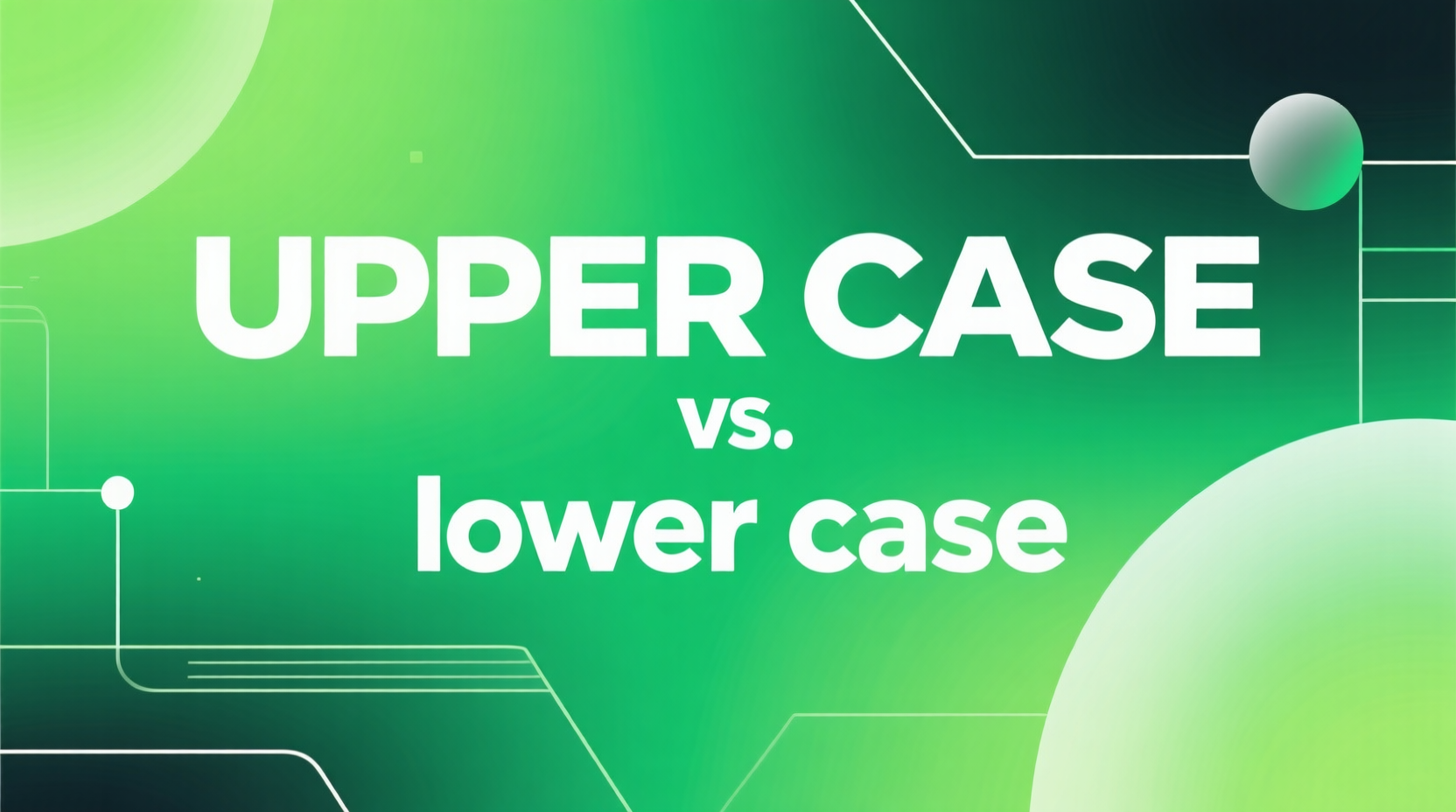
When working with text, the choice between upper case (capital letters) and lower case (small letters) can significantly impact readability, tone, and even meaning. Understanding when and how to use each case is essential for clear and effective communication.
What Is Upper Case?
Upper case refers to capital letters (e.g., A, B, C). These letters are typically taller and more prominent than their lower-case counterparts.
Common Uses of Upper Case
-
Sentence Beginnings – The first letter of a sentence is always capitalized.
- Example: "The meeting starts at 10 AM."
-
Proper Nouns – Names of people, places, brands, and titles are capitalized.
- Example: "John visited Paris last summer."
-
Acronyms & Initialisms – Shortened forms of phrases are often written in all caps.
- Example: "NASA, FBI, HTML"
-
Headings & Titles – Important words in titles are often capitalized (title case).
- Example: "The Art of Creative Writing"
-
Emphasis & Authority – All-caps can convey importance or urgency but should be used sparingly.
- Example: "WARNING: DO NOT ENTER"
What Is Lower Case?
Lower case refers to small letters (e.g., a, b, c). These are the standard form of letters in most writing.
Common Uses of Lower Case
-
General Text – Most words in sentences are in lower case unless they require capitalization.
- Example: "the cat sat on the mat."
-
Informal Writing – Social media, chats, and casual emails often use lower case for a relaxed tone.
- Example: "hey, what's up?"
-
Programming & Coding – Many programming languages are case-sensitive, and lower case is often preferred for variables and functions.
- Example:
username = "admin"
- Example:
-
URLs & Email Addresses – Most web addresses and emails are case-insensitive but typically appear in lower case.
- Example: "contact@example.com"
When to Avoid All Caps
While all-caps can be useful for emphasis, excessive use can:
- Reduce readability (studies show that long blocks of uppercase text are harder to read).
- Appear aggressive or rude (e.g., "PLEASE REPLY IMMEDIATELY").
- Break stylistic conventions in formal writing.
Conclusion: Choosing the Right Case
The choice between upper and lower case depends on context:
- Upper case is best for formal writing, proper nouns, and emphasis.
- Lower case is standard for most text and informal communication.
Need to convert text quickly? Try our free tools:
- Upper Case Converter– Instantly convert any text to ALL CAPS.
- Lower Case Converter – Transform text into lowercase effortlessly.
Use these tools to ensure your writing follows the right case conventions!